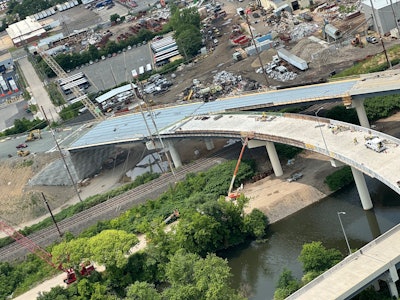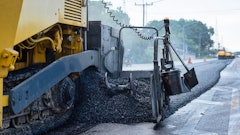
Just two weeks ago, on Sunday, June 12, 2023, a section of highway I-95 collapsed in Philadelphia, PA. The arterial road is one of high importance, as I wrote about at the time here. The early reports were dubious about how long the project would take to reopen, and what the detour routing would do to the local area traffic. There were a lot of doomsday scenarios discussed, including Josh Shapiro, the governor of PA, who tempered expectations about the potential wait time, saying that it could be months. As it turned out, just about all the worst case thinking didn't come to pass. In less than fourteen days the I-95 highway was back open for business.
The question is: What we can take away from this achievement? What is it telling us about the nature of what we, as a country, are capable of, and, lastly, what does the lack of traffic apocalypse say about how we think about transportation infrastructure itself?
How The Feat Was Achieved
In the immediate hours after the incident occurred, both the State and Federal officials made statements in the news, committing to do whatever it took to see that emergency funds were available to address the crisis. As Secretary of Transportation Pete Buttigieg toured the site shortly afterwards, he reiterated the administration's commitment, "Every resource that is needed will be made available."
This was true of funds (the estimated repair costs range from $25-$30 million), labor (Crews have work nearly around the clock since the day of the accident, first clearing the debris, and then rebuilding), and materials. This included some interesting alternatives like that of foamed glass aggregates which is an ultra-lightweight product made from 99% recycled container glass diverted from landfills and processed by Aero Aggregates, a Delaware Country, PA, company that specializes in the product.
Over 8,000 cubic yards of foamed glass aggregate were used to rebuild the collapsed corridor. The aggregates' light weight ensures aging utility lines beneath I-95 are protected during the reconstruction process. The amount of foamed glass aggregate utilized for this project alone diverts approximately 6.5 million, 12-ounce glass bottles from landfill.
What Are Some Takeaways From This Crisis?
I had the opportunity to travel to Philadelphia, PA, the week after the collapse took place. I visited the job site of a company called All-Out Parking Lots, who were completing work on a massive project for the Philadelphia Sports Complex. On the last day that I was there, we flew in a helicopter to take pictures of the work, but on our return to the airfield, went over the site of the I-95 incident. As it turned out, though we didn't know at the time, we were sharing airspace with President Joe Biden. Brandon Noel
Brandon Noel
As anecdote, I thought that the heavy traffic we experienced at times was likely from the closed section of road. However, the local workers informed me that where we were wasn't really an impact zone for those diversions. This was normal heavy traffic. So, once I returned home, I did some research. According to the Philadelphia Inquirer, despite the fears of a nightmare traffic scenario, after only a few days, city traffic levels returned to normal even while repairs continued on the bridge.
The data was collected by HERE Technologies, a company that gathers real-time traffic data from sensors on cars, trucks, and cell phones. The worst day, obviously, was Monday, June 13, the day immediately following the event. That's no big surprise, however, just two days later things began to ease. What happened to all those tens of thousands of cars that normally utilize the highway? The extra volume of traffic slowly disappeared. An estimated 160,000 cars use that stretch of road every day, and, at least some of them were no longer on the roads at all.
Induced Demand and Traffic Volume
While data is difficult to gather on exactly how and why, there are a few answers we can point to. One is that the local trains operated by the Southeastern Pennsylvania Transportation Authority (SEPTA) which run in and out of the city to local neighborhoods surrounding it added extra trains and times to their normal routes. SEPTA reported 16% week-over-week bump in weekday ridership on four Regional Rail lines serving commuters who live north of the gap in the freeway.
Overall, the apparent lack of vehicle gridlock supports a theory of traffic and urban design referred to as Induced Demand where increases to capacity do not reduce traffic volume, they statistically increase it. According to a study by the National Association of City Transportation Officials (NACTO),"This concept embodies the 'build it and they will come' idea, or a belief in the existence of 'latent demand,' which suggests that there are willing buyers who will express their demand for travel once the service is offered. In growing urban areas, the evidence from recent decades seemed to support this interpretation."
This incident sheds light on an alternative method of infrastructure thinking when it comes to design. The reduction in available capacity, led to a small but measurable reduction in volume.
It means the possibility of reducing traffic, greenhouse gas emissions, excess heat, noise pollution, and doing so while making our communities healthier economically. If citizens have the ability to get to work or travel to the centers of commerce and entertainment without driving, the economic activity of those areas increases. This effect is sometimes referred to as pedestrian economic activation. It translates into something like this: If people aren't driving by your business at 55 miles per hour, they might see something they want and stop inside. If they can't see it, they can't realize they want to buy it.
 Brandon Noel
Brandon Noel






























